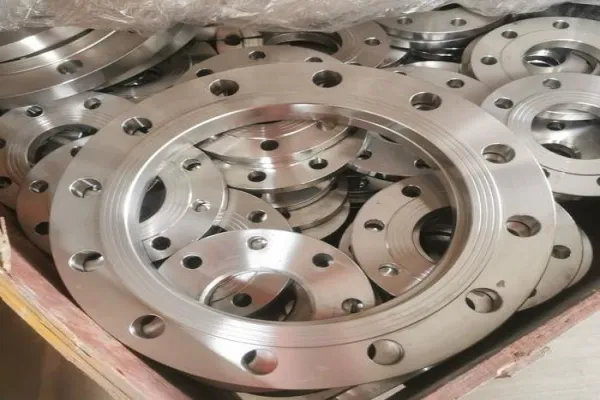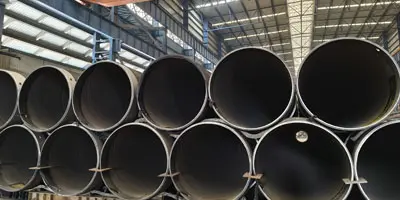Flanges are an essential component in pipeline systems, playing a critical role in ensuring secure connections between pipes, valves, and other equipment. Among the many types of flanges used in industries such as oil and gas, petrochemicals, power plants, and water treatment, Slip On (SO) flanges and Welding Neck (WN) flanges are two of the most widely used. While both serve similar functions, their design, application, and performance differ significantly. This article will provide a comprehensive comparison of these two flange types, highlighting their welding methods, materials, pressure ratings, connection methods, costs, and overall performance.
Understanding Slip On (SO) Flanges
A Slip On flange, also known as a neck flat-weld flange, is designed to slide over the pipe before welding. It requires two welds: one on the outside and one on the inside of the flange. These flanges conform to international standards such as ASME B16.5, ASME B16.47, ISO 7005-1-2011, BS 4504-3.1, and DIN EN 1092-1.
Characteristics of Slip On Flanges:
Welding Type: Fillet welds on both the outside and inside
Material: Typically made from standard steel plates
Pressure Rating: Ranges from 0.6 MPa to 4.0 MPa
Cost: Lower initial cost compared to Welding Neck flanges
Inspection: Requires additional inspection if the nominal diameter exceeds 250mm
Application: Preferred for low to medium-pressure pipelines where welding ease and cost efficiency are critical
Welding Neck (WN) Flanges
Welding Neck flanges, often referred to as butt weld flanges, are designed with a long tapered hub that transitions smoothly into the pipe, providing a robust and secure connection. This design allows for a full penetration butt weld, reducing stress concentration and preventing leakage.
A weld neck flange, also called a tapered hub flange or high-hub flange, is a kind of flange that can relocate stress to the pipes, ensuring a decrease in high-stress concentration at the bottom of the flange. There are two welding neck flanges designs – the first type is used with wipes while the second, longer type cannot be used with pipes but with a process plant. The weld neck flange comprises of a round fitting that extends beyond the rim of the circumference. These flanges, typically manufactured from forging, are actually welded to pipes.
The rim has numerous holes drilled into it that enables the flanged to be attached to a bolted flange. This design is far better because of the structural valve.
Differences Between Slip On and Welding Neck Flanges
1. Welding Methods
The connection between a Slip On flange and a pipe involves fillet welds, while a Welding Neck flange uses a full penetration butt weld. Fillet welds are simpler but less robust, whereas butt welds provide superior strength and durability. Additionally, butt welds can undergo radiographic inspection, ensuring higher weld quality.
2. Material Strength
Slip On flanges are usually made from regular steel plates, which are sufficient for low to medium-pressure applications. In contrast, Welding Neck flanges are manufactured from forged steel, making them more resistant to stress, corrosion, and mechanical failure.
3. Pressure Handling Capability
Slip On flanges are suitable for pipelines with nominal pressures ranging from 0.6 MPa to 4.0 MPa. Welding Neck flanges, on the other hand, can handle significantly higher pressures, from 1 MPa up to 25 MPa, making them the preferred choice for high-stress applications.
4. Connection to Pipeline
Slip On flanges can only be connected to straight pipes and cannot be directly welded to butt-weld pipe fittings. Welding Neck flanges, however, can connect seamlessly to all butt-weld pipe fittings, including elbows, tees, and reducers, providing more flexibility in pipeline design.
5. Cost Considerations
The initial cost of Slip On flanges is lower due to their simpler manufacturing process and reduced welding requirements. However, the need for two separate welds and additional inspection can increase the overall installation cost. Welding Neck flanges require a more expensive full penetration butt weld, but they provide better long-term performance, reducing maintenance and potential failure costs.
6. Service Life and Durability
Welding Neck flanges offer superior durability, especially under high-pressure and high-temperature conditions. The smooth transition between the flange hub and pipe minimizes turbulence and reduces erosion and restriction to flow. In contrast, Slip On flanges have a shorter fatigue life, approximately one-third that of Welding Neck flanges, due to their weaker connection and potential for weld failure.

WN Flange Material
Weld neck flanges are available in a variety of materials. These materials must meet the standards set. The material should also meet the quality specified by the ASTM or ASME standards.
However, the thickness and inner diameter of the flange will be determined based on the size of the pipe for which this weld neck flange is manufactured.
Talking about the material, carbon alloys are a popular material choice for manufacturing these flanges as they can also resist extreme temperatures. It is available in two materials, ASTM A 181 and
ASTM A 105. The flanges are available in various grades such as ASME B16 47 “A” series and “B” series to meet the needs of the customers and the industry.
Apart from this material, weld neck flanges are also made of stainless steel. The flanges are made of ASTM A182, F304,
316L, 347H, 310S, ASME B16 5 and are finished in duplex steel. UNS
S31803 duplex steel material is also in use. Apart from stainless steel, weld neck flanges are also made in various other materials such as carbon alloys and nickel, among others.
Nickel alloy weld neck flanges come in Inconel 600 and 625, Hastelloy C22, C276 and other such materials.
Conclusion
Both Slip On and Welding Neck flanges play crucial roles in industrial pipeline systems, but their applications are distinctly different. Slip On flanges offer a cost-effective solution for low to medium-pressure systems, whereas Welding Neck flanges provide superior strength, durability, and pressure resistance, making them ideal for high-stress environments. Understanding these differences will help engineers and project managers make informed decisions when selecting the appropriate flange type for their specific application.






 English
English Español
Español بالعربية
بالعربية











 Phone :
Phone :  Whatsapp :
Whatsapp :  Email :
Email : 


